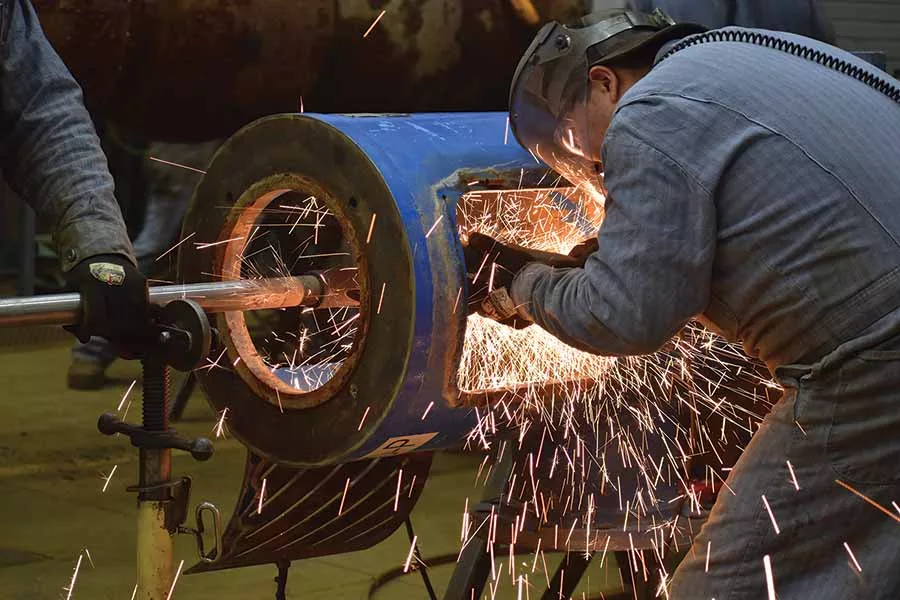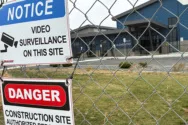
Home » Area manufacturing jobs rebound but not to pre-pandemic levels
Area manufacturing jobs rebound but not to pre-pandemic levels

June 10, 2022
The state predicts the number of manufacturing jobs will drop in the next decade, yet industry groups intend to do everything they can to not only buck that trend but double the number of both manufacturing positions and manufacturing companies in Washington.
“If the Legislature does nothing, we will have fewer manufacturing jobs,” said Dave Mastin, vice president of government affairs for the Association of Washington Businesses, a statewide business association that also serves as a manufacturing and technology association. “There are things that the Legislature could do to enhance economic vitality and manufacturing in the state of Washington and in every region, including Benton and Franklin counties.”
Those jobs are vital as manufacturing is often viewed as a linchpin of the economy.
The jobs often pay well and don’t require a college education.
Manufacturing roles include about 300,000 workers across the state.
The AWB said the average manufacturing job pays $81,000 in Washington, while the Employment Security Department (ESD) lists an average salary for a manufacturing position of $61,000 in Benton County and $45,000 in Franklin County, where food manufacturing is a large employer and puts the industry in the top three for employment in the county.
The ESD estimates about 8,000 people currently work in manufacturing in the Tri-City region, covering durable goods like metal, machinery and computers, and non-durable goods, like food and beverages, which make up the lion’s share of manufacturing roles in the area.
One in 10 people employed in Franklin County work in a manufacturing role, with about half that in neighboring Benton County. Typical roles include packaging and filling machine operators and tenders, along with machinists, metal fabricators and production workers.
Upward trend
The number of employees in manufacturing roles increased about 0.3% year over year.
While this is an upward trend, manufacturing employment has not recovered to pre-pandemic levels estimated at 8,200 jobs in the industry.
But it has increased from the low point during the pandemic, March 2021, when the industry was hit hard, with 7,600 people working in the sector locally.
Manufacturing has been on a steady upswing ever since.
Statewide, a “hiring blitz” by Boeing is credited with pulling up the entire manufacturing sector, according to the state’s economist with the ESD who spoke to The Seattle Times, and said Washington makes up 3.3% of the nation’s growth in manufacturing, while accounting for just 2.3% of the total population.
Predictions made last July for manufacturing jobs in Benton and Franklin counties correlate with the state’s expectation that manufacturing roles will decrease in the long term.
Regulatory certainty
Mastin points to House Bill 1170, which passed overwhelmingly with bipartisan support last year, and was sponsored by 8th Legislative District Rep. Matt Boehnke, R-Kennewick.
Known as the Washington BEST (Building Economic Strength Through) Manufacturing Act, it has a goal of doubling the state’s manufacturing employment base, doubling the number of small businesses, and doubling the number of women and minority-owned manufacturing businesses in the next 10 years.
Mastin said one of the keys to accomplishing these goals is to “increase the regulatory certainty,” making it easier for entrepreneurs to establish a new business.
The AWB has large businesses as part of its membership, including local corporations like Lamb Weston and Lampson International, but the majority are small companies with 10 or fewer employees.
“When you compare us to other states, Washington is probably at the bottom end when it comes to regulatory certainty, which is the flexibility in allowing economic development to occur,” Mastin said. “So our big message to the Legislature is, ‘The business community is here. We’re ready to step up, and we’re ready to be part of the solution that expands manufacturing rather than contracts it.’ ”
An important message as the most recent report from the National Association of Manufacturers found the industry output $65 billion in Washington in 2019, accounting for nearly 11% of the total output in the state.
The most recent NAM data from 2017 lists 6,500 manufacturing firms in the state. The NAM reports an even higher average salary for manufacturing jobs in Washington, citing typical compensation around $95,000 for these roles in 2019. The figures include the high-paying positions often found in the aerospace sector on the west side of the state.
Specialized training
Most manufacturing roles, including many in the Tri-City region, require some form of post-high school training, whether an apprenticeship, credential or certificate.
That’s where Mastin finds the workforce is lagging.
“Across the board we are really challenged in filling those mid-level skilled jobs. It’s the electricians, it’s the plumbers, and other construction sectors. If you’re going to add manufacturing jobs, which whether you double or not, if you’re going to add them, you need the workforce. And right now, we don’t have that workforce, he said.”
NAM’s most recent survey of its members found that “companies cite difficulties in finding sufficient workers to meet their needs, despite experiencing wage growth for production and nonsupervisory workers in manufacturing that has been at a 40-year high.” The survey also points to an “elevated” rate of 800,000 job openings for 10 straight months.
Programs at Kennewick’s Tri-Tech Skills Center, available to local high school students, include courses in welding, drone manufacturing and construction trades. Students also may seek degrees in welding technology and manufacturing technology at Columbia Basin College, along with partnerships in apprenticeships, including in aerospace.
The BEST Manufacturing Act includes recommendations for specific actions to develop a manufacturing workforce pipeline, including “identification of dislocated workers, career-connected learning opportunities, and a survey of financial aid that can be leveraged to fund training for the manufacturing workforce pipeline.”
“We’re asking the Legislature to raise their eyes a little bit, not just focus on the next two or four years, but look out 10 years to where we want to be,” Mastin said.
While less often found in Eastern Washington versus the Interstate 5 corridor on the west side, the manufacturing sector frequently overlaps with information and communication technology, another one of Washington’s largest sectors, the AWB finds.
“The distinction between tech and manufacturing as separate sectors is becoming less defined,” the AWB said.
Local News Manufacturing
KEYWORDS june 2022





